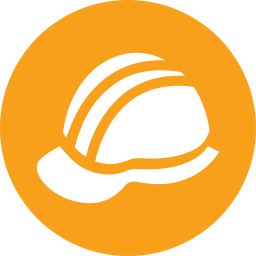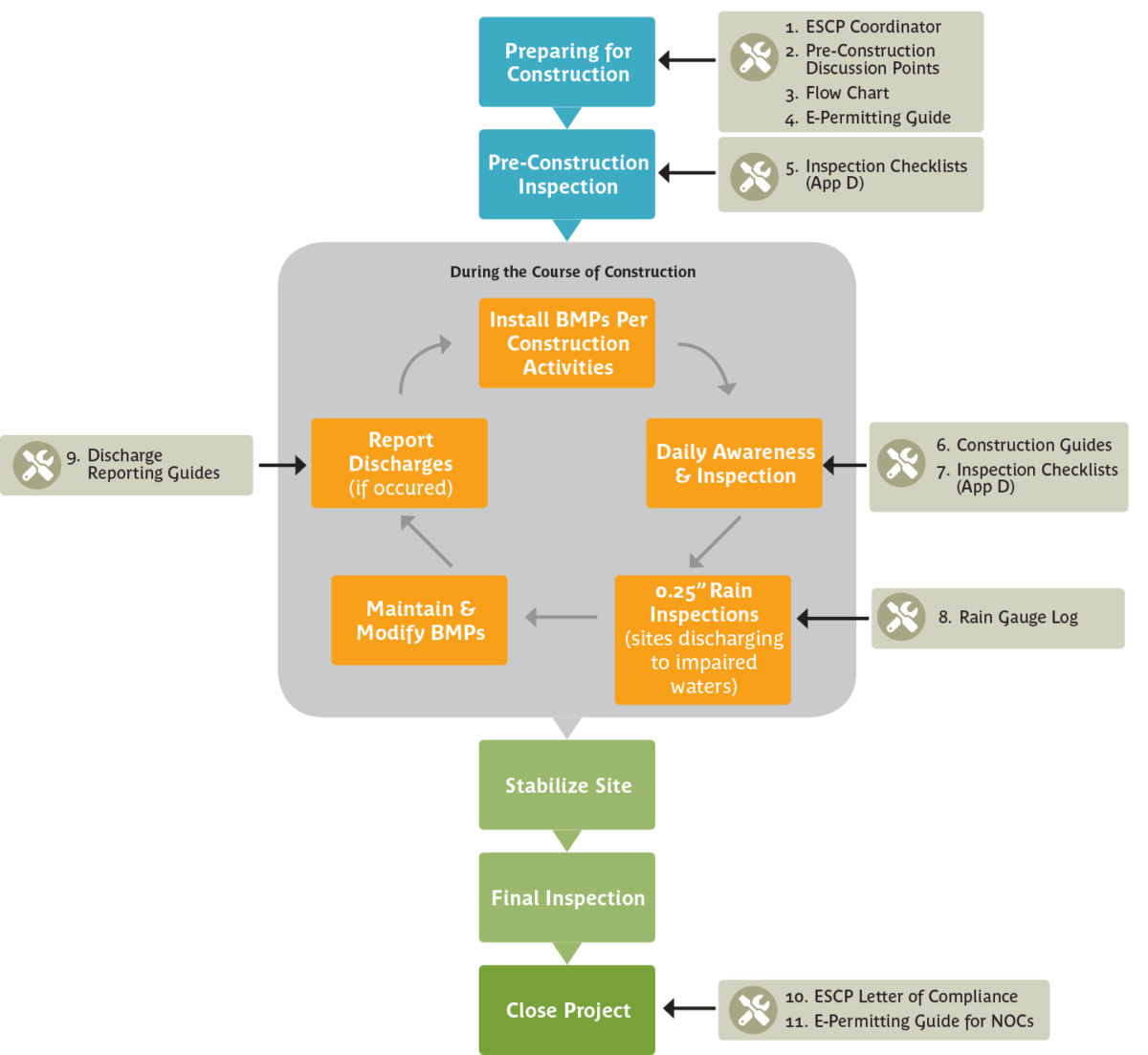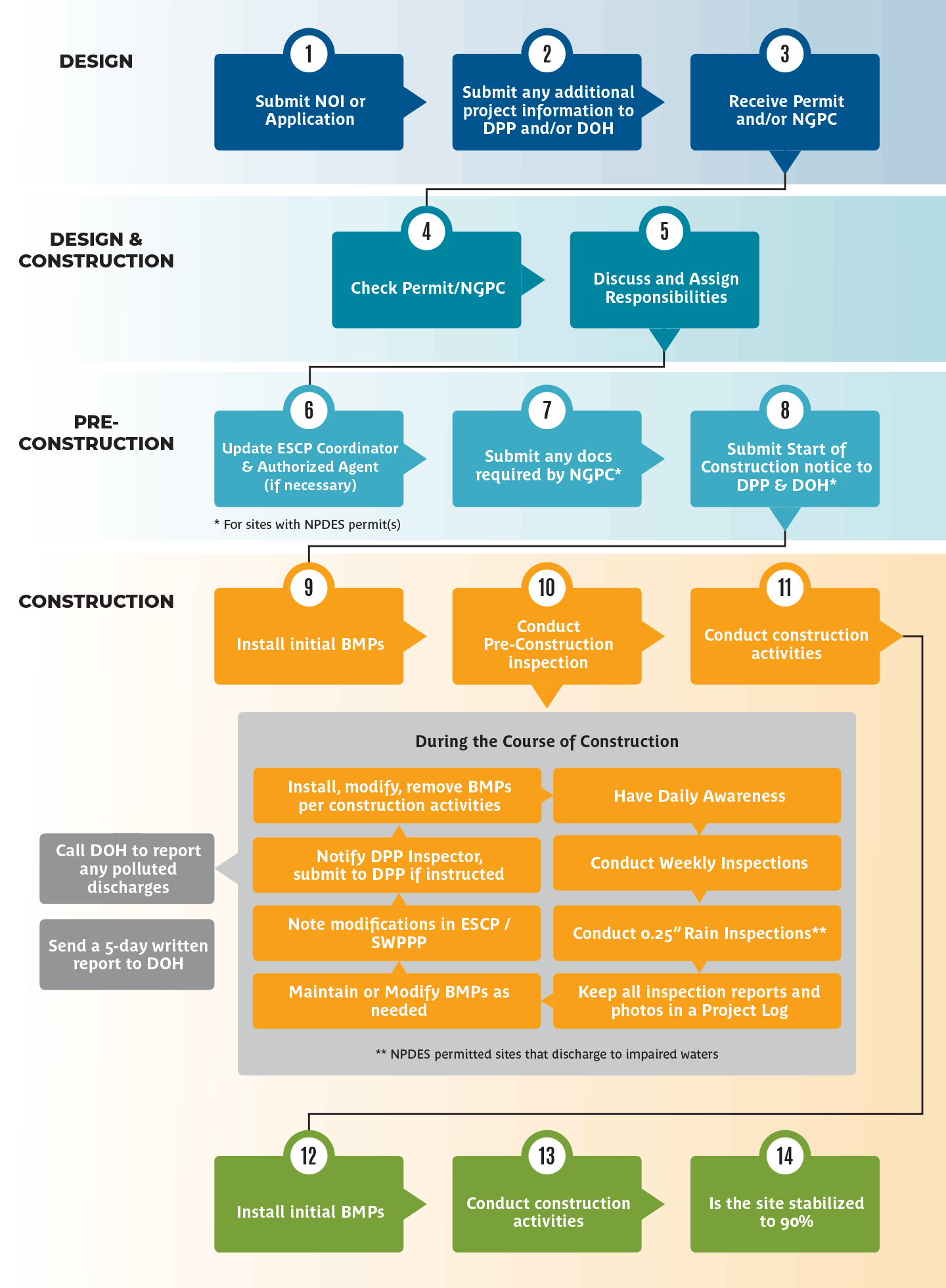
This page contains storm water related resources which will be utilized in the construction phase for large projects with a disturbed area equal to or greater than 1 acre and requiring coverage under Appendix C, the NPDES General Permit Authorizing Discharges of Storm Water Associated with Construction Activity. This applies to Rules Relating to Water Quality, Effective Dec. 2018 Categories:
1C
5; and
Trenching (≥ 1 acre)
Categories 1C, 5, and Trenching (≥ 1 acre) projects may not begin work unless an Appendix C NPDES General/Individual Permit has been issued. Don’t have an NPDES permit, but need one? See the Design Storm Water Tools (≥ 1 Acre) page.
Note: For projects that disturb less than 1 acre of land (Categories 1A, 1B, 2, 3, 4, Trenching (< 1 acre) and Minor Development), see the Construction Storm Water Tools (< 1 Acre) page instead for applicable design resources.
See below for tools developed to assist in compliance with National Pollutant Discharge Elimination System (NPDES) construction storm water permits, the City’s RRTWQ, and the City Municipal Separate Storm Sewer System (MS4) permit, whose main goal is to prevent storm water pollution from construction sites to Hawaii waters.
Daily Awareness & Inspections
Designating an ESCP Coordinator
An Erosion and Sediment Control Plan (ESCP) Coordinator is the designee who will be responsible for the implementation, inspection and oversight of an approved ESCP during construction.
The ESCP Coordinator:
Must have a current ESCP Coordinator Certificate from the City’s Department of Planning and Permitting (DPP)
Can be a homeowner, contractor or authorized representative approved by the property owner
Must be designated prior to permit pick-up
May be changed at any time
Click on the links to the right for more information.
Pre-Construction Discussion Points
Before construction begins, it’s important to discuss compliance requirements and determine who is responsible for what. Design and construction personnel, the contractor, and contracted construction managers (if applicable), will all have useful input in this discussion, and coordination is particularly important when more than one party is involved in the completion of a task. These pre-construction discussion points are intended to help usher this conversation and ensure common requirements are covered.
General Overview of NPDES Compliance-Related Tasks in the Construction Phase
The first tool is a construction process flowchart, which illustrates certain noteworthy NPDES compliance-related tasks in the construction process. It is not meant to show all steps of the design and construction process, but is intended to present a general timeline of when compliance tasks can be expected and who will be responsible for them.
Guides for Submitting NPDES Documents on DOH’s E-Permitting Portal
After obtaining NPDES permit coverage, compliance documents (e.g. notification of start/cessation, contact information, etc.) must be submitted to the Department of Health’s (DOH’s) E-Permitting Portal. Refer to the guides below for step-by-step instructions for navigating the e-Permitting Portal.
Inspection Forms for Large CCH Construction Projects
The RRTWQ require three inspections for all projects throughout the construction process:
- A pre-construction inspection
- Performed by the ESCP Coordinator prior to commencing ground-disturbing activities
- Confirm that Best Management Practices (BMPs) are installed correctly and according to the ESCP
- Required to use Appendix D – NPDES Permitted Construction Projects
- Regular inspections of storm water BMPs
- Performed by the ESCP Coordinator
- Ensure pollution risk is being mitigated at all construction sites
- Required to use Appendix D – NPDES Permitted Construction Projects
- A concluding inspection
- Performed by either the property owner, authorized agent, or ESCP Coordinator
- Confirm that all disturbed areas have been stabilized and all temporary BMPs have been removed
- Use ESCP Letter of Compliance
Regular Inspection Frequencies for Large CCH Construction Projects
The site shall be inspected
- At least once every 7 calendar days
If any portion of the site discharges to an impaired water, the site shall be inspected:
- At least once every 7 calendar days; AND
- Within 24-hours of a rain event that exceeds 0.25″ each time it occurs
Note: See the Rain Gauge Log section below for information on monitoring rain events on construction sites.
Construction Guides for RRTWQ Compliance
The links below (coming soon!) offer construction checklists that provide guidance on pertinent NPDES and RRTWQ requirements specific to each category.
Categories 1C and 5 Construction Checklist (PDF)
Trenching Project (≥ 1 Acre) Construction Checklist (PDF)
Rain Gauge Log
For large project sites that discharge to an impaired water, the NPDES permit requires an additional inspection within 24-hours of each rain event of 0.25″ or more. The ESCP Coordinator can monitor rain levels at construction sites using a rain gauge, but in cases where it may not always be feasible, using a permanent local rain gauge is permitted. Government agencies such as NOAA and the USGS provide rain gauge data to the public and can be found on the links to the right.
NPDES permitees are also required to maintain a rain gauge log, which will track storm event information. See the Rain Reporting Spreadsheet to the right for a template.
Note: If there is a storm event that continues for multiple days, and each day of the storm produces 0.25″ or more of rain, inspections must be conducted within 24-hours of the first day of the storm and within 24 hours after the end of the storm. Inspections are only required during the project’s normal working hours, so if a storm event occurs during off-hours, an inspection shall be conducted on the day that work resumes.
Rainfall Atlas of Hawaii (webpage)
USGS Precipitation Conditions (webpage)
NOAA Hawaii Daily Rainfall Summary (webpage)
NOAA Hawaii 90-Day Rainfall Archive (webpage)
Rain Reporting Spreadsheet (XLSX)
Guide to Reporting Polluted Discharge(s) to State Waters
Polluted discharge(s) to State Waters must be addressed immediately. The guide below consists of outlines for oral and written reports to make to DOH and be documented.
Note: Within 24 hours of becoming aware of a discharge, immediately:
- Address it, and
- Notify the DOH-CWB Enforcement Section at 808-586-4309, or if outside of office hours, call the Hawaii State Hospital Operator at 808-247-2191.

FEEDBACK?
Please contact The Limtiaco Consulting Group should you have any questions or require any assistance. Your feedback regarding any of the tools and information featured here is gladly appreciated.
The Limtiaco Consulting Group
npdes@tlcghawaii.com
(808) 596-7790


